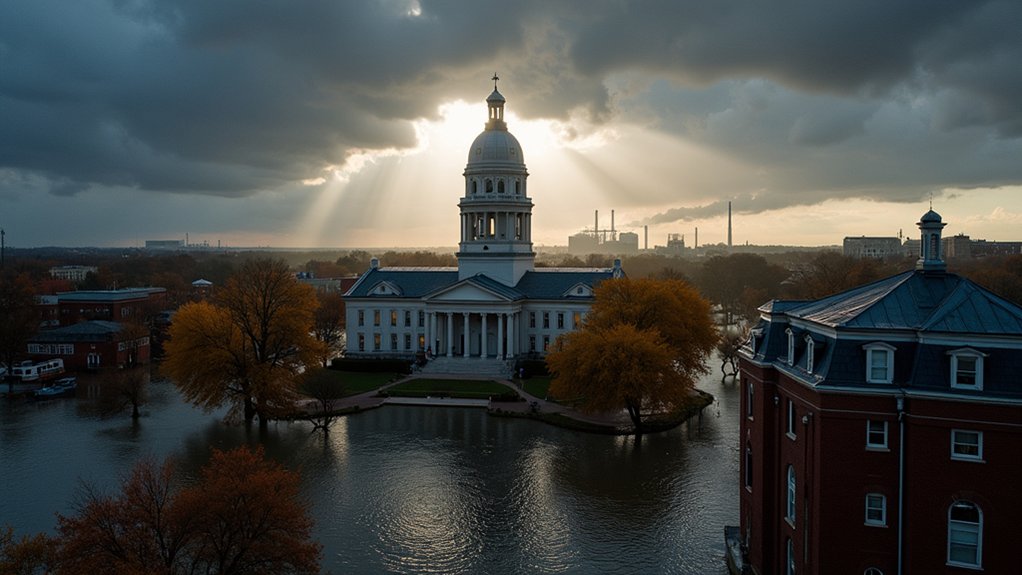While most states race toward renewable energy, West Virginia sits stubbornly at 49th place for solar generation—burning coal like it’s 1950. But something’s shifting in the Mountain State, where a former ash landfill just sprouted 17,000 solar panels. Talk about irony.
The numbers tell a grim story. Only 0.52% of West Virginia’s electricity comes from solar. That’s 205 megawatts total, enough to power about 21,076 homes. For context, coal still generates 86% of the state’s power. The solar industry employs just 395 people statewide. Not exactly a boom.
West Virginia’s solar industry employs just 395 people while coal still dominates at 86% of power generation.
Yet this landfill transformation signals change. Those 17,000 panels represent more than symbolism—they’re proof that even coal country can pivot. The average West Virginia home needs a 14.43-kilowatt system to offset its electricity use. That’s $45,453 before incentives, dropping to $31,817 after the federal tax credit. Eleven years to break even. Not terrible, not great. West Virginia’s net metering programs let homeowners earn credits for excess energy their panels produce, further sweetening the deal.
Here’s what matters: a 10-kilowatt system cuts CO₂ emissions by 25.60 tons annually. That’s real impact in a state choking on coal fumes. These systems generate about 13,000 kilowatt-hours yearly, saving homeowners $158.98 monthly. Over 25 years, that’s $71,881 in savings. Math doesn’t lie.
West Virginians are surprisingly supportive. Seventy-eight percent think more residents should own solar panels. Sixty-nine percent back community solar programs. Fifty-four percent want residential rooftop solar incentivized. The people get it, even if the state government doesn’t. FirstEnergy’s Mon Power and Potomac Edison built this 5.75 MW farm with fifty-four union workers, proving solar creates local jobs too. This project aligns with the global trend where renewable sector jobs have reached 11.5 million worldwide.
Space isn’t the issue either. A typical 10-kilowatt system needs just 715 square feet of roof. Most homes can handle that. The Solar Energy Industries Association predicts 1,064 megawatts of new capacity over five years, potentially bumping West Virginia to 40th place nationally. Still pathetic, but progress.
This landfill project matters because it flips the script. Where coal ash once poisoned the ground, solar panels now harvest clean energy. It’s poetic justice, really. West Virginia built its identity on coal. Maybe it’s time to build something else. Those 17,000 panels prove it’s possible. The question is whether anyone’s paying attention.
References
- https://www.energysage.com/local-data/solar/wv/
- https://seia.org/wp-content/uploads/2025/03/WestVirginia-1.pdf
- https://electrek.co/2025/06/03/west-virginia-just-hit-a-solar-milestone-but-theres-a-major-catch/
- https://poweroutage.us/solar/wv
- https://www.energyfreedomwv.org/news/2025/4/29/west-virginias-solar-holler-hits-100-million-milestone-in-renewable-energy-projects








